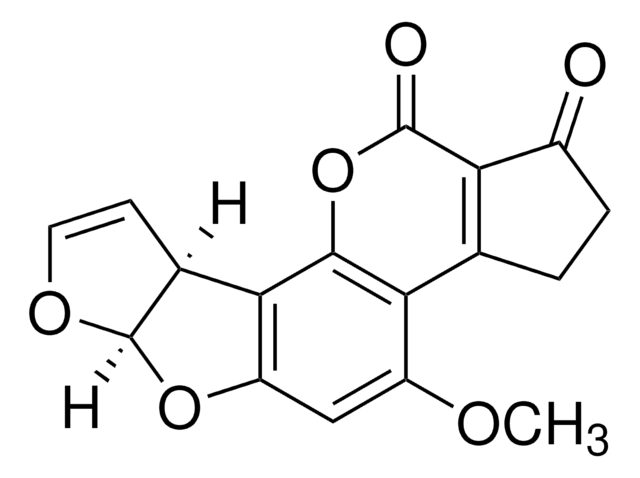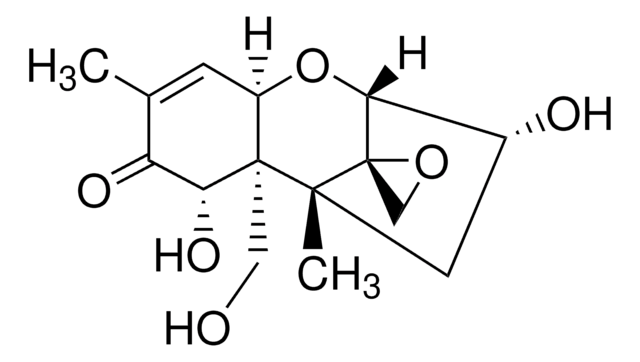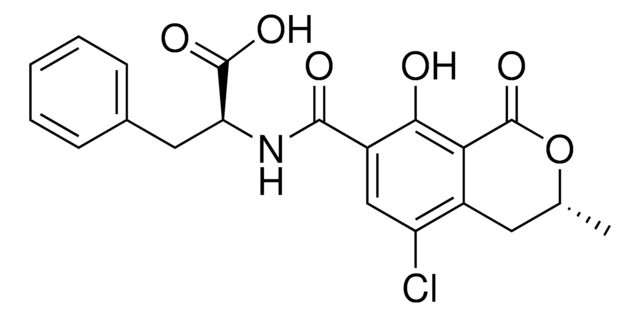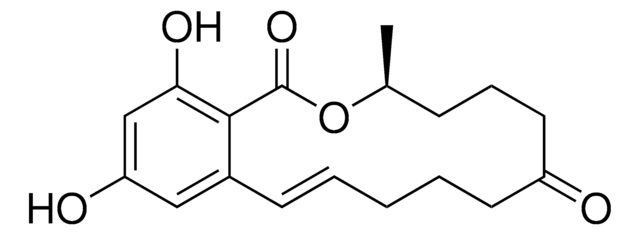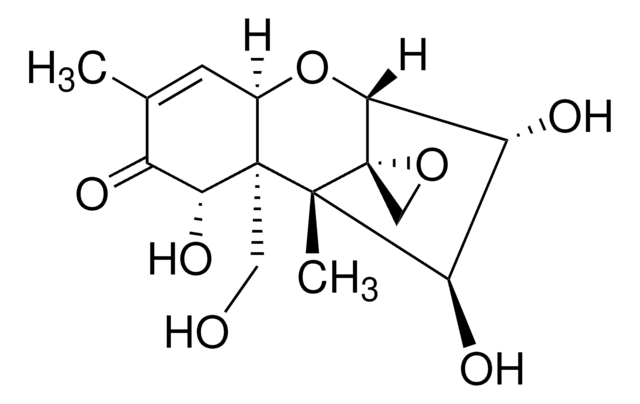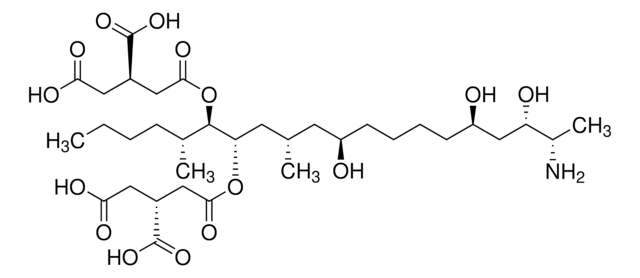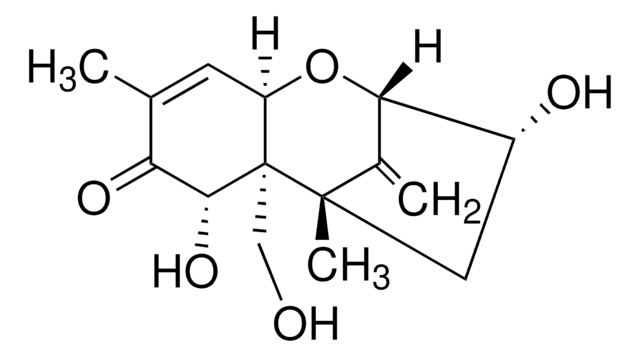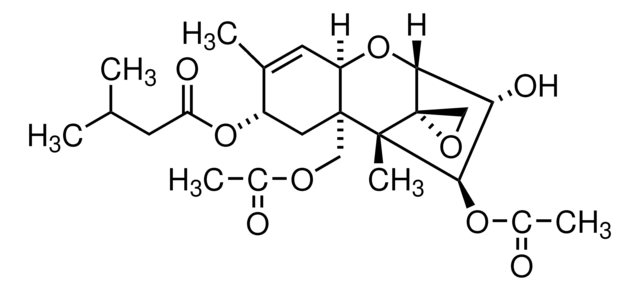D0156
Deoxynivalenol
Synonym(e):
3α,7α,15-Trihydroxy-12,13-epoxytrichothec-9-en-8-on, Vomitoxin
About This Item
Empfohlene Produkte
Form
powder
Qualitätsniveau
Lagertemp.
2-8°C
SMILES String
[H][C@]12O[C@]3([H])[C@H](O)C[C@@](C)([C@]34CO4)[C@@]1(CO)[C@H](O)C(=O)C(C)=C2
InChI
1S/C15H20O6/c1-7-3-9-14(5-16,11(19)10(7)18)13(2)4-8(17)12(21-9)15(13)6-20-15/h3,8-9,11-12,16-17,19H,4-6H2,1-2H3/t8-,9-,11-,12-,13-,14-,15+/m1/s1
InChIKey
LINOMUASTDIRTM-QGRHZQQGSA-N
Suchen Sie nach ähnlichen Produkten? Aufrufen Leitfaden zum Produktvergleich
Allgemeine Beschreibung
Anwendung
- als Mykotoxin zum Einleiten der Zytotoxizität in jejunalen Epithelzellen von Schweinen und zur Untersuchung der Schutzwirkung von Saccharomyces cerevisiae auf die Zellviabilität der Wirtszellen
- zum Einleiten von Toxizität in Nacktmäusen zum Untersuchen der Wirkung von Probiotika-Ergänzungen (Lactobacillus rhamnosus GG (LGG) oder Lactobacillus acidophilus (LA)) auf den Schutz des Wirts
- als Schilddrüsenhormonrezeptor(TRβ)-Antagonist im zellbasierten Luciferase-Reportergen(CALUX)-Assay
Biochem./physiol. Wirkung
Signalwort
Danger
H-Sätze
Gefahreneinstufungen
Acute Tox. 2 Oral
WGK
WGK 3
Flammpunkt (°F)
Not applicable
Flammpunkt (°C)
Not applicable
Persönliche Schutzausrüstung
Eyeshields, Faceshields, Gloves, type P2 (EN 143) respirator cartridges
Analysenzertifikate (COA)
Suchen Sie nach Analysenzertifikate (COA), indem Sie die Lot-/Chargennummer des Produkts eingeben. Lot- und Chargennummern sind auf dem Produktetikett hinter den Wörtern ‘Lot’ oder ‘Batch’ (Lot oder Charge) zu finden.
Besitzen Sie dieses Produkt bereits?
In der Dokumentenbibliothek finden Sie die Dokumentation zu den Produkten, die Sie kürzlich erworben haben.
Kunden haben sich ebenfalls angesehen
Unser Team von Wissenschaftlern verfügt über Erfahrung in allen Forschungsbereichen einschließlich Life Science, Materialwissenschaften, chemischer Synthese, Chromatographie, Analytik und vielen mehr..
Setzen Sie sich mit dem technischen Dienst in Verbindung.